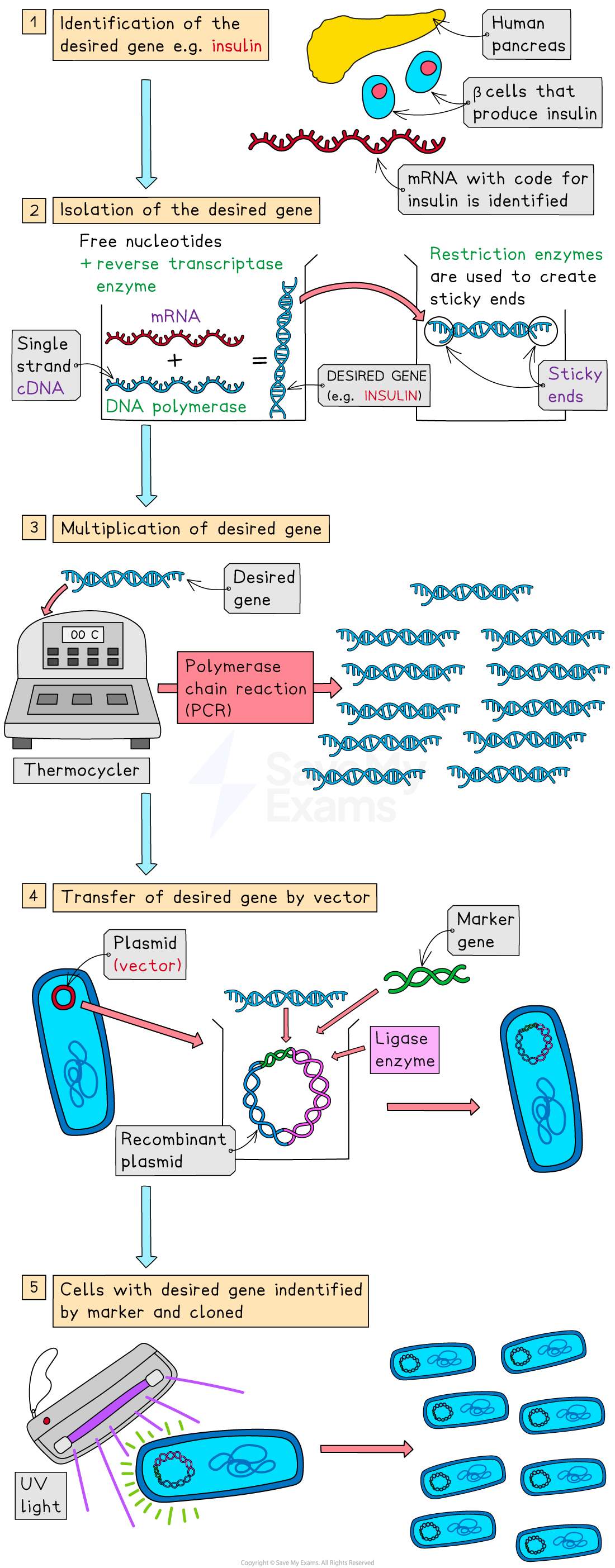Recombinant DNA Technology (AQA A Level Biology): Revision Note
Exam code: 7402
Recombinant DNA Technology
Recombinant DNA
The genetic code is universal, meaning that almost every organism uses the same four nitrogenous bases – A, T, C & G
The genetic code is the basis for storing instructions that, alongside environmental influences, dictate the behaviour of cells and, as a result, the behaviour of the whole organism
The universal nature of the genetic code means that the same codons code for the same amino acids in all living things
This means that genetic information is transferable between species
Thus, scientists have been able to artificially change an organism's DNA by combining lengths of nucleotides from different sources (typically, the nucleotides are from different species)
The altered DNA, with the introduced nucleotides, is called recombinant DNA (rDNA)
If an organism contains nucleotide sequences from a different species, it is called a transgenic organism
Any organism that has introduced genetic material is a genetically modified organism (GMO)
The mechanisms of transcription and translation are also universal, which means that the transferred DNA can be translated within cells of the genetically modified organism

Recombinant DNA technology
This form of genetic engineering involves the transfer of fragments of DNA from one organism/species into another organism/species
The resulting genetically engineered organism will then contain recombinant DNA and will be a genetically modified organism (GMO)
For an organism to be genetically engineered, the following steps must be taken:
Identification of the DNA fragment or gene
Isolation of the desired DNA fragment
Multiplication of the DNA fragment (using polymerase chain reaction)
Transfer into the organism using a vector (e.g. plasmids, viruses, liposomes)
Identification of the cells with the new DNA fragment (by using a marker), which is then cloned
Genetic engineers need the following to modify an organism:
Enzymes (restriction endonucleases, ligase, and reverse transcriptase)
Vectors - used to deliver DNA fragments into a cell (e.g. plasmids, viruses and liposomes)
Markers - genes that code for identifiable substances that can be tracked (e.g. GFP - green fluorescent protein, which fluoresces under UV light, or GUS - β-glucuronidase enzyme, which transforms colourless or non-fluorescent substrates into products that are coloured or fluorescent)
Genetic engineering is being used in the new field of science called synthetic biology
This is an area of research that studies the design and construction of different biological pathways, organisms and devices, as well as the redesigning of existing natural biological systems

Examiner Tips and Tricks
When answering questions about genetic engineering, you should remember to include the names of any enzymes (restriction endonucleases, reverse transcriptase, ligase) involved and mention that markers (genes which can be identified) and vectors (transfer the desired gene) are also used.

Unlock more, it's free!
Did this page help you?